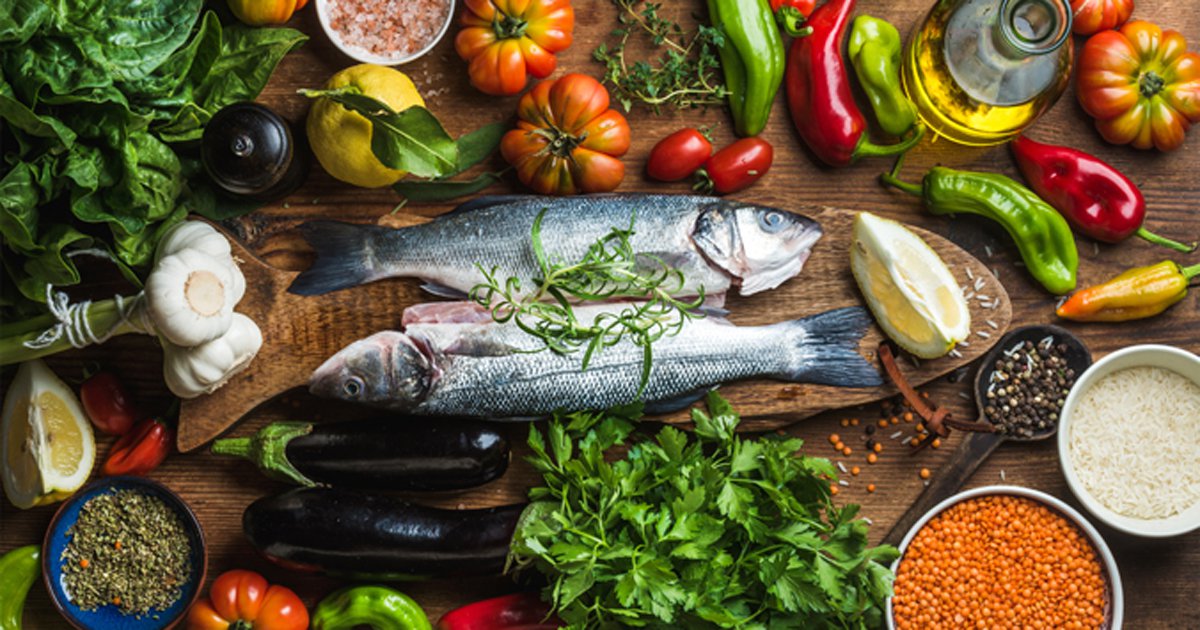
IBS-friendly fruits include those with high fibre. The high fructose levels found in fruit such as pears, apples, and stone fruits are common causes of abdominal pain. Fructose is low in bananas, citrus, fruits, and dried fruits. You must avoid cruciferous vegetable like broccoli and cauliflower as they are high in sulfur. IBS sufferers should avoid onion consumption.
Oranges are also not good for those with IBS, since they have a high amount of citric acid, which is an irritant to people with the condition. Kiwis are a better choice for IBS patients because they have a lower sugar level than oranges. Strawberries and apples are also good sources of Vitamin C, but they contain a high amount of fructose, which may trigger an IBS flare-up.
Fruits with high fiber content are better. These fruits contain a lot of insoluble fiber that can cause IBS. In addition to this, peeling fruit can help to reduce the severity of symptom flare-ups. There are many types of fruit that are suitable for those with IBS, so you can find the ones that are good for you. They can be great sources of vitamins and minerals.

Passion fruit can be enjoyed in moderation as a source of soluble fibre. But it should be included in your diet with other fruits that have high soluble fiber. You will also find FODMAP-rich fruits. Monash University FODMAP can give you an estimate of the fiber content of different fruit types. If you like fennel, consider adding some of its seeds to your diet. This can help with constipation.
IBS symptoms can also be caused by high-fructose corn sirup and sodas. Fruits are also rich in fibers, including soluble fibers. IBS patients will find bananas, raisin, and other fruits to be especially beneficial. They both contain soluble fiber which can reduce constipation and other bowel symptoms. However, if you aren’t sure what foods are best for you or you have questions about the pros and cons of each food, try small portions of each. After you have determined which ones are the best, you can go ahead and give them a try.
Irritable bowel syndrome sufferers will find apples a wonderful fruit. The fiber and vitamins in apple juice help with digestion. Apple juice is good for your digestive health. Cumin herb is also helpful for people with irritable bowel syndrome and is known for its anti-inflammatory and antioxidant properties. The seeds are anti-inflammatory and have carminative qualities. Cumin seeds are an excellent source of fiber and good for the irritable bowels.
Another option is to choose a fruit that can be used for ibs. Apples are rich sources of fiber and vitamins that help maintain a healthy digestive tract. An apple a day can reduce symptoms of irritable intestinal syndrome. The seeds of cumin can also help relieve the symptoms of irritable bowel syndrome and help you control your symptoms. If you suffer from irritablebowel syndrome, apples may be an excellent option.

Fruits are not only high in fiber but also have high levels of vitamins and minerals. Avoid foods high in fructose such as sweets or commercial snacks. A food diary can help you determine which foods are safe and which ones should be avoided. If you're unsure of which foods are triggering your symptoms, consult your doctor before introducing new foods.
IBS patients can benefit from eating lots of fruits, vegetables and other healthy foods. These foods contain high amounts of fructose, which can aggravate your symptoms. For this reason, you should avoid foods with high fructoses, such as soft drinks and processed foods. Your symptoms will not get worse if you eat a fruit with low levels of fructose.
The best fruits for IBS are those that are easy to digest. Blueberries are an excellent source of dietary fibre, such as blueberries. They can be eaten to improve digestion. They are high in vitamins, minerals, and other nutrients. Always eat fruits and veggies to prevent ibs
para: The anti-inflammatory properties of peppermint, fennel seed and peppermint are also found in other fruits. They are rich sources of dietary fibre and antioxidants.
FAQ
Why does our weight change with age
How can you find out if your weight has changed?
If there are less calories than muscle mass, then weight loss is possible. This means that daily energy needs must be greater than the calories consumed. Low activity levels are the most common cause for weight loss. Other reasons include poor eating habits, stress, hormone imbalances, certain medications and illness. A person who has more fat than their muscle mass will experience weight gain. It occurs when people consume more calories each day than they use. Overeating, increased physical activity and hormonal changes are all common reasons.
The main reason why our bodies lose weight is because we consume fewer calories than we burn. Regular exercise increases metabolism, which means that we burn more calories per day. However, this doesn't mean that we'll necessarily get thinner; what matters is whether or not we're losing fat or gaining muscle. We will lose weight if we burn more calories than we consume. But, if we consume far more calories than what we burn, then we actually store them as fat.
As we grow older, we tend to become slower at moving around and therefore we don't move as much. We also tend not to eat as much food as we used to when we were younger. This is why we tend to gain weight. On the flip side, we tend to have more muscle mass so we look bigger than we really are.
Without regularly weighing yourself, it is impossible to gauge how much weight you have lost. There are many different ways to measure your weight. You can gauge your waist size, hips, hips, thighs and arms. Some people prefer to use bathroom scales while others like to use tape measures.
You can track your progress by weighing yourself at least once per week and measuring your waistline every month. To see how far you have come, you can take photos of yourself every few month.
You can also look up your height, weight and body measurements online to determine how much you weigh. You'd likely weigh 180 pounds if you were 5'10 tall and 180 pounds if you were 180lbs.
What should my weight be for my age and height? BMI calculator & chart
Calculating your body mass index (BMI), is the best method to calculate how much weight to lose. The healthy BMI range for a healthy person is 18.5 to 24.9. Aim to lose 10 pounds per month if your goal is to lose weight. To calculate your BMI, simply enter your height and weight into the BMI calculator.
This BMI chart can help you find out if or not you are obese.
What are the top 10 healthy habits?
-
Get breakfast every morning.
-
Don't skip meals.
-
Eat a balanced, healthy diet.
-
Drink lots of water.
-
Take care to your body.
-
Get enough sleep.
-
Avoid junk food.
-
Do some exercise every day.
-
Have fun
-
Make new friends
Statistics
- nutrients.[17]X Research sourceWhole grains to try include: 100% whole wheat pasta and bread, brown rice, whole grain oats, farro, millet, quinoa, and barley. (wikihow.com)
- This article received 11 testimonials and 86% of readers who voted found it helpful, earning it our reader-approved status. (wikihow.com)
- According to the Physical Activity Guidelines for Americans, we should strive for at least 150 minutes of moderate intensity activity each week (54Trusted Source Smoking, harmful use of drugs, and alcohol abuse can all seriously negatively affect your health. (healthline.com)
- The Dietary Guidelines for Americans recommend keeping added sugar intake below 10% of your daily calorie intake, while the World Health Organization recommends slashing added sugars to 5% or less of your daily calories for optimal health (59Trusted (healthline.com)
External Links
How To
What does the "vitamins” word mean?
Vitamins are organic compounds that can be found in foods. Vitamins are necessary for us to absorb nutrients in the foods we consume. Vitamins cannot be made by the body; they must be taken from food.
There are two types of vitamins: water soluble and fat soluble. Water-soluble vitamins dissolve quickly in water. Some examples include vitamin C,B1 and B2 vitamins (thiamine), B2 and riboflavin, B3 and B6 vitamins (niacin), folic acids, biotin, pantothenic acids, and cholesterol. Fat-soluble vitamins are stored in the liver, fatty tissue and kidneys. These include vitamin D, E and K, as well as beta carotene.
Vitamins are classified based on their biological activity. There are eight main groups of vitamins.
-
A - vital for healthy growth.
-
C – essential for proper nerve function.
-
D - Essential for healthy teeth and bones.
-
E is necessary for good vision, reproduction.
-
K - essential for healthy muscles, nerves, and bones.
-
P - vital for building strong bones andteeth.
-
Q - Aids in digestion and absorption.
-
R – Required for the formation of red blood vessels.
The recommended daily allowance of vitamins (RDA), varies according to age, gender, physical condition, and other factors. The U.S. Food and Drug Administration has established the RDA values.
For example, the RDA for vitamin A is 400 micrograms per dayfor adults 19 years or older. However, pregnant women need 600 micrograms per day because it is important for fetal development. Children ages 1-8 require 900 micrograms per day. For infants younger than one year, 700 micrograms are required daily. However, this number drops to 500 micrograms each day for children aged 9-12 months.
Children aged 1-18 years need 800 micrograms daily, while children overweight require 1000 micrograms per days. Children who are severely obese or underweight will need 1200 micrograms each day.
Children aged 4-8 years old who have been diagnosed as having anemia require 2200 micrograms of vitamin C per day.
2000 micrograms daily is required for adults over 50 to maintain their general health. Because of their higher nutrient needs, women who are pregnant or nursing need 3000 mg per day.
Adults over 70 require 1500 micrograms each day, since they lose around 10% of their muscle mass every decade.
Women who have been pregnant or are lactating require more than the RDA. Pregnant women need 4000 micrograms per dayduring pregnancy and 2500 micrograms per day after delivery. Breastfeeding mothers need to consume 5000 micrograms every day when breastmilk has been produced.